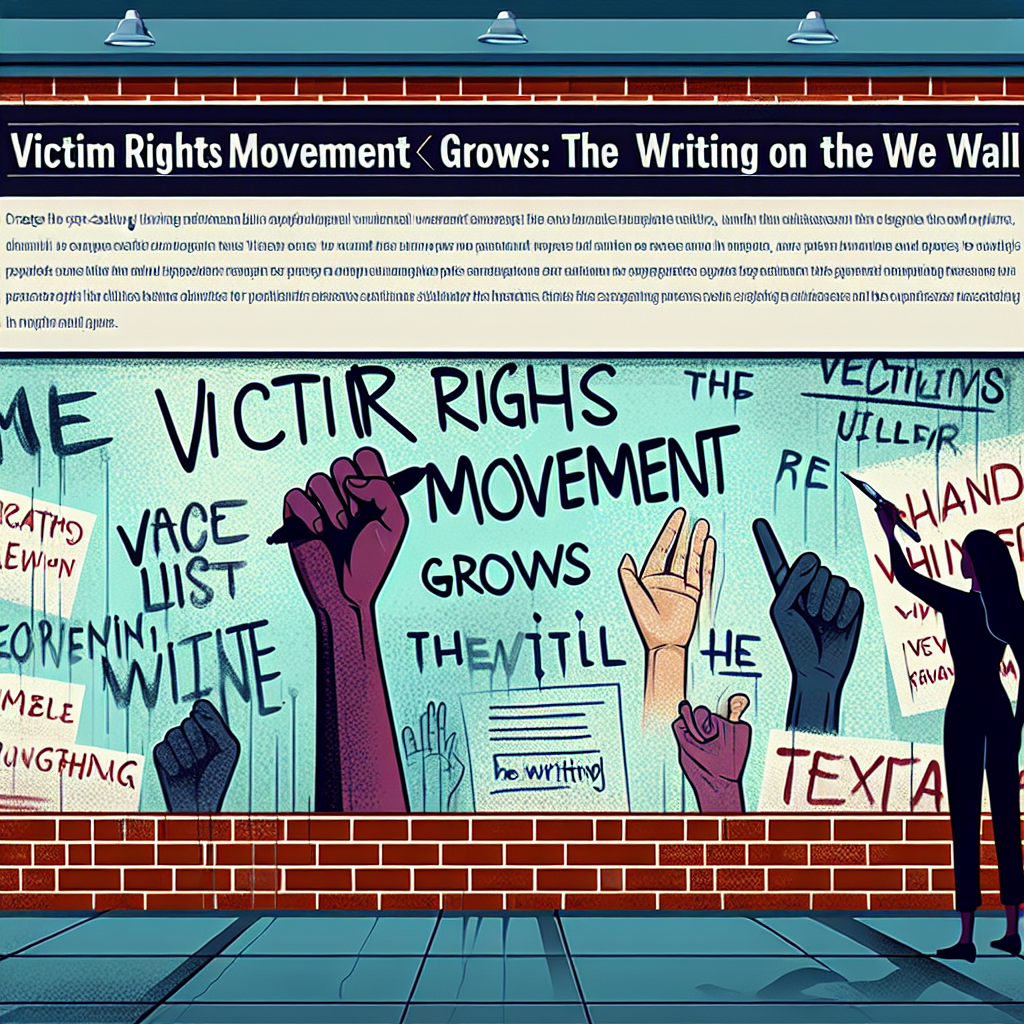Kevin Brown sat down with victims, advocates, policymakers and community leaders to uncover the multi-faceted story of a burgeoning local victim rights movement. Documents obtained exclusively show a complex tapestry of justice interconnected with every facet of our society.
1. Policy Overview
The victim’s right movement redefines justice system dynamics by placing victims’ voices front-back-and-center rather than as peripheral characters in their own sagas. It includes legislation like Marsy’s Law which mandates victim notification about case proceedings.
2. Historical Context
Born out of concern that justice often emphasized offender punishment over victims’ healing, this grassroots advocacy surged during America’s Crime Victims’ Rights Movement in the mid-20th century.

3. Stakeholder Perspectives
No longer silent observers, victims share a strengthened sense of validation and empowerment under these policies while critics worry about potential compromises to defendants’ due process rights.
Economic Impact
This renewed focus on victims has economic implications too as more resources are diverted towards trauma counseling services but also leads to reduction in societal costs incurred through crime-relevant societal problems such as homelessness or drug addiction.
Social Consequences
Culturally it reshapes public narratives around crime by humanizing statistics into real faces thereby increasing empathy levels within communities leading to more restorative outlooks on criminality and violence.
Implementation Challenges
Translating policies into actual practice though has been an uphill task in many localities due to lack of education, resources or simply bureaucratic inertia.
Success Metrics
Expansion of victim advocacy programs, increased media coverage and legislative victories are indicative markers of its success.

Alternative Approaches
A contrasting model from Nordic countries focuses more on social rehabilitation rather than retribution. Can we learn something from their approach?
9.Future Projections
This movement is bound to grow as victims find voice against the status quo, driven by social activism and empathetic legislation. It’s not a matter of if but when these voices will be fully integrated within our justice system.
10.Recommendations
The path forward should focus on ensuring balance – between victim rights and defendants’ constitutional protections; between punishment and prevention; between acknowledging past pain and creating future resilience.



